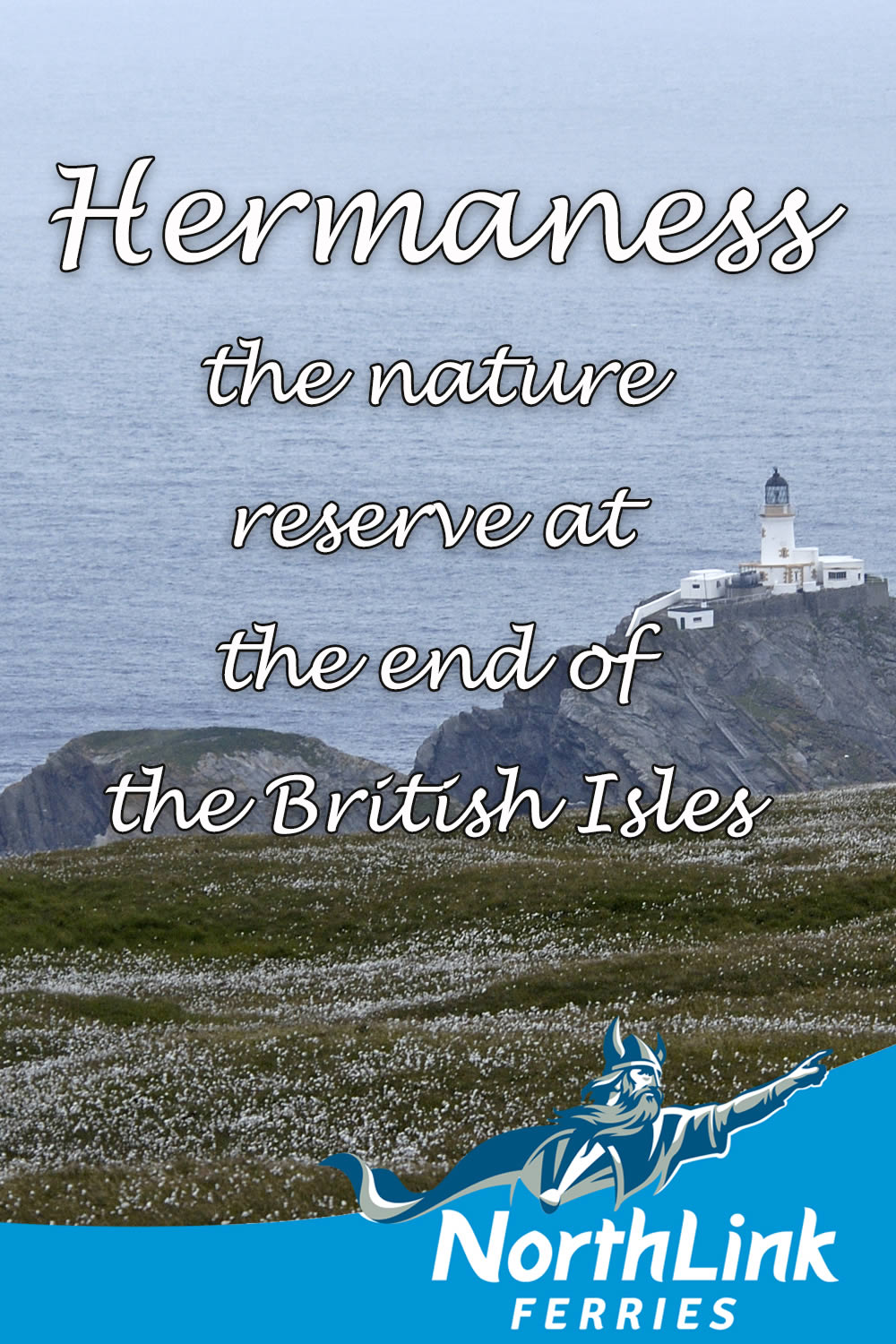Hermaness – the nature reserve at the end of the British Isles
This ancient landscape is gloriously sculpted in life-giving moor and soaring sea cliffs. Offshore the tumultuous Atlantic surges against stacks and arches on the type of coastline that gets TV documentary makers very excited.
As a travel writer for over a quarter of a century I’m lucky to have visited myriad dramatic nature reserves alive with wildlife around the world. And hand on heart they just don’t come much more dramatic and alive with wildlife than Shetland’s Nature Scot Hermaness National Nature Reserve.
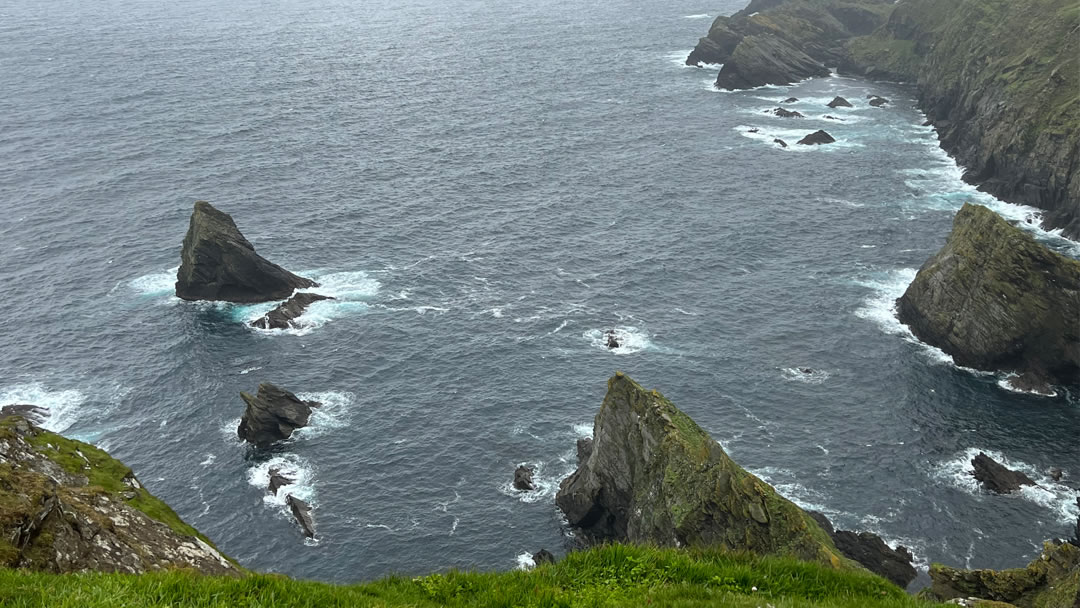
Hermaness is a deeply special place. Don’t just take my word for it. As well as being protected as an NNH since 1955, it is also a Site of Special Scientific Interest (SSSI), and a key component of the Hermaness, Saxa Vord and Valla Field Special Protection Area (SPA). Hermaness is also part of the Nature Scot Shetland National Scenic Area and the Shetland UNESCO Global Geopark. That is quite some list and is a massive testament to the astounding local flora and fauna.
Over the years I’ve been lucky to savour a hike here on the UK’s most northerly inhabited isle of Unst three times. It’s a life-affirming experience that has just got better and better over the years, with the excellent path work helping you make the most of this close, intense brush with Mother Nature.
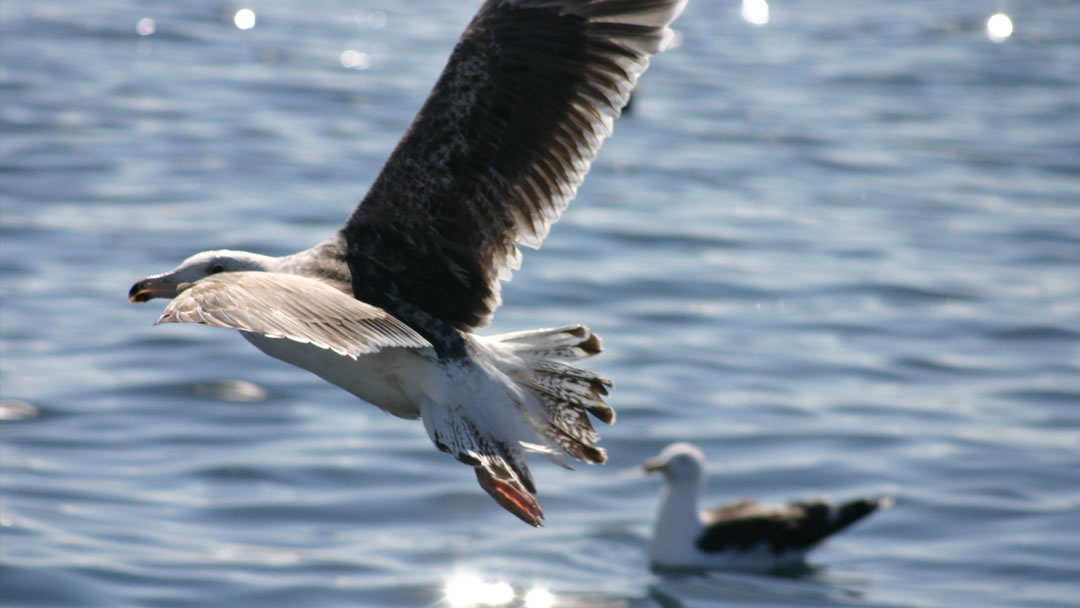
Hermaness is no wee nature trail snack: the reserve stretches its green tentacles out for almost 1,000 hectares. Welcome improvements over my time walking the reserve have been the wee interpretation shelter with its information panel and that there are now toilets too. These facilities came as a partnership project between NatureScot, Shetland Islands Council and VisitScotland to enhance the visitor experience. The recycled plastic boardwalk that now marches out across the historic path towards Muckle Flugga signalling station on Hermaness Hill is great too.
I’ve loved every second of walking in Hermaness. Forget holidays in a theme park – Hermaness offers an escape to a Jurassic Park. This ancient landscape is gloriously sculpted in life-giving moor and soaring sea cliffs. Offshore the tumultuous Atlantic surges against stacks and arches on the type of coastline that gets TV documentary makers very excited. The skies and the seas seem somehow bigger in Hermaness; Mother Nature’s equivalent of turning the dial up to 11. There is no time limit to how long I could just sit by the vaulting cliffs watching the gannets soar around on the breeze.
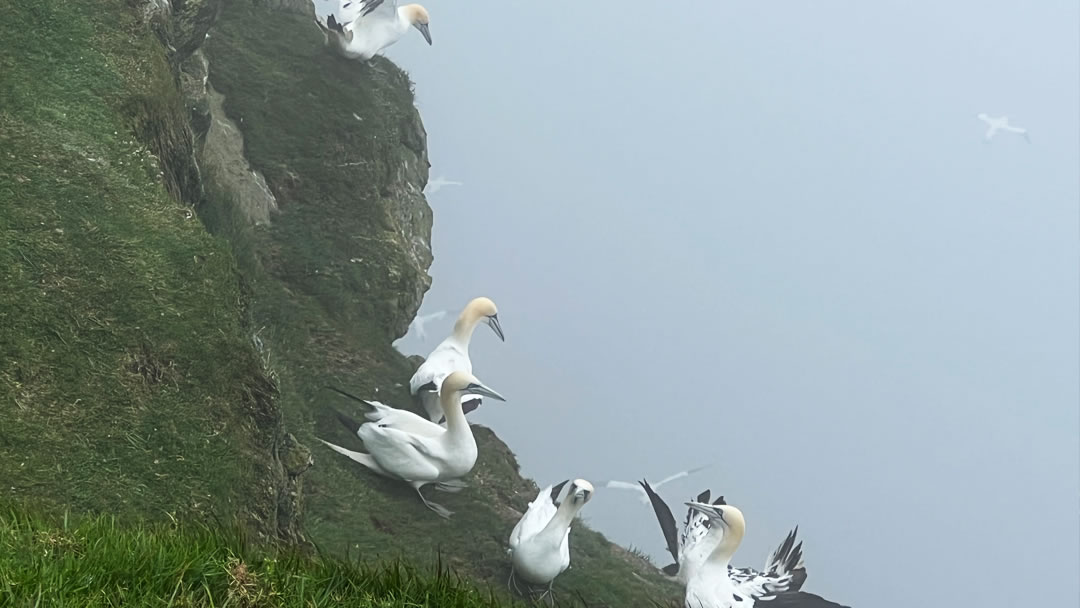
You are never really alone in Hermaness even if you’re walking solo and there is not another human soul in sight, which is regularly a joy. Your companions are thousands of gannets, guillemots and gloriously cute puffins (known locally as ‘tammie norries’). Then there are fulmars, gulls, shags and kittiwakes. The blanket bog inland also teems with breeding waders, including dunlin, golden plover, and snipe.
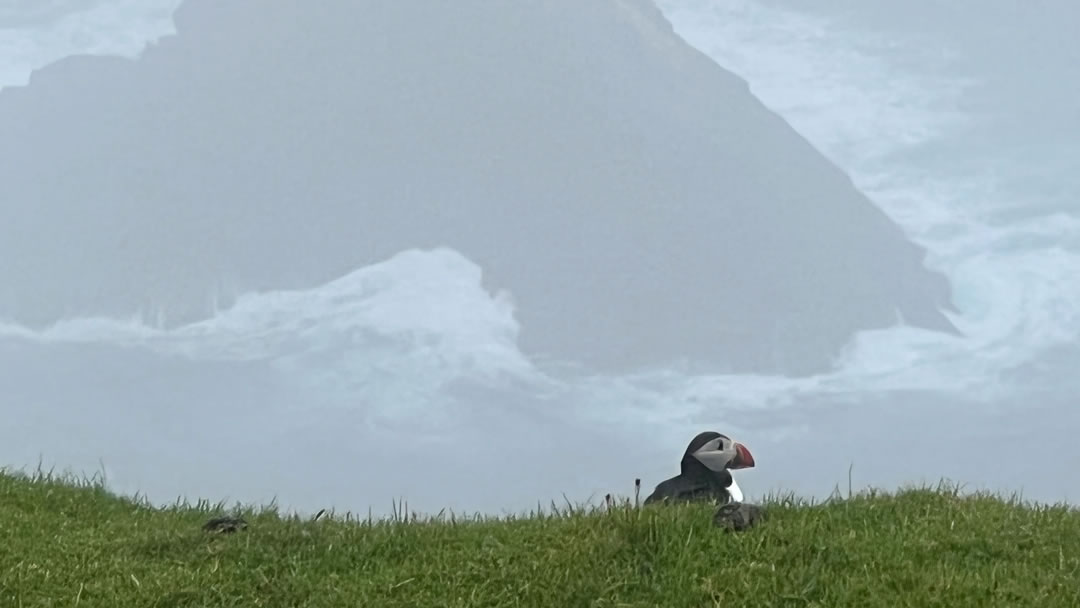
Hermaness’ most notorious resident are the bonxies, or to give them their proper name, great skuas. The reserve is home to the third largest colony in the world. They are as mighty as eagles, but feel as threatening as tetradactyls when they swoop low over your head. I’ve found waving a walking pole can help, but in this part of the world you’re often dramatically on your own versus nature. Unst is no zoo. Staying on the boardwalk across the moor really helps as the bonxies seem to get that people stick to it. This gives you even more reason to protect the reserve and nesting birds, and stick to the path.
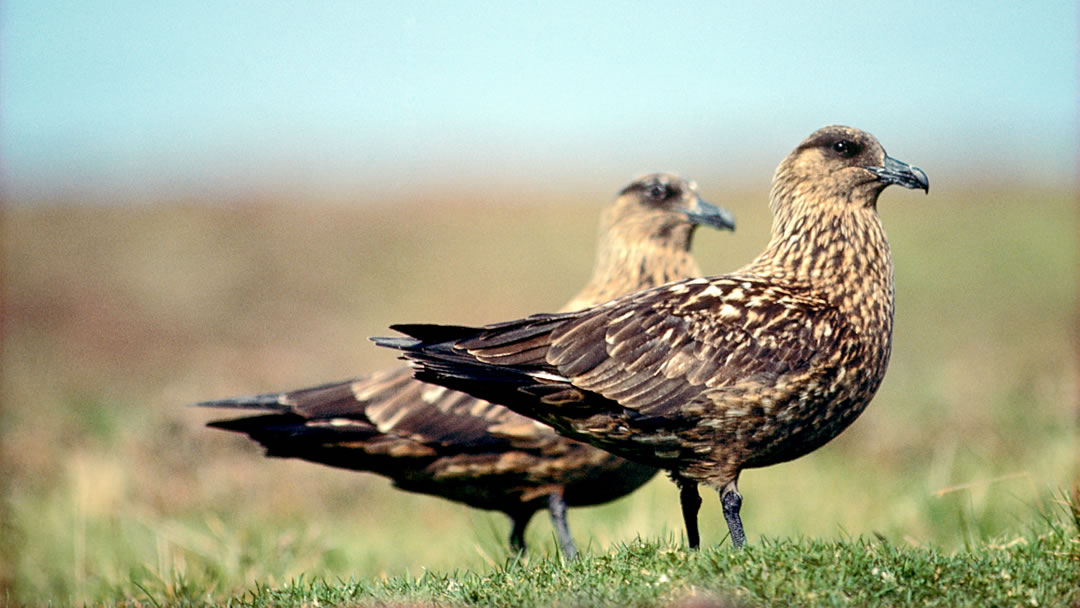
And it’s not just birdlife either. In the water look out for harbour porpoises, various dolphin species and whales too, with minkes and killer whales spotted here. There are both common and grey seals too. The elusive otter are found in Hermaness, and on land another wonderful creature is the Shetland field mouse. Even smaller delights thrive too, with over 50 species of beetle and a similar number of spider species, as well as the striking orange and yellow hued Shetland bumblebee.
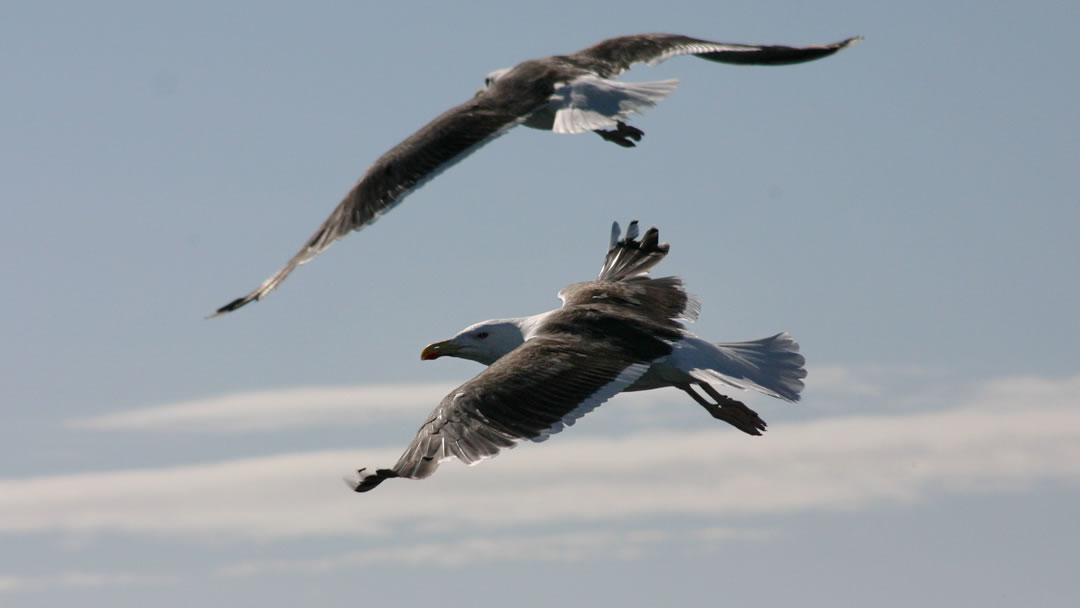
Hermaness is an oasis alive with myriad wonders. Just when you hike north and think you are done there is Muckle Flugga, the UK’s most northerly isle. Little more than a gnarly scraggle of skerries, this is the end of the line. Next stop is the Faroe Islands.
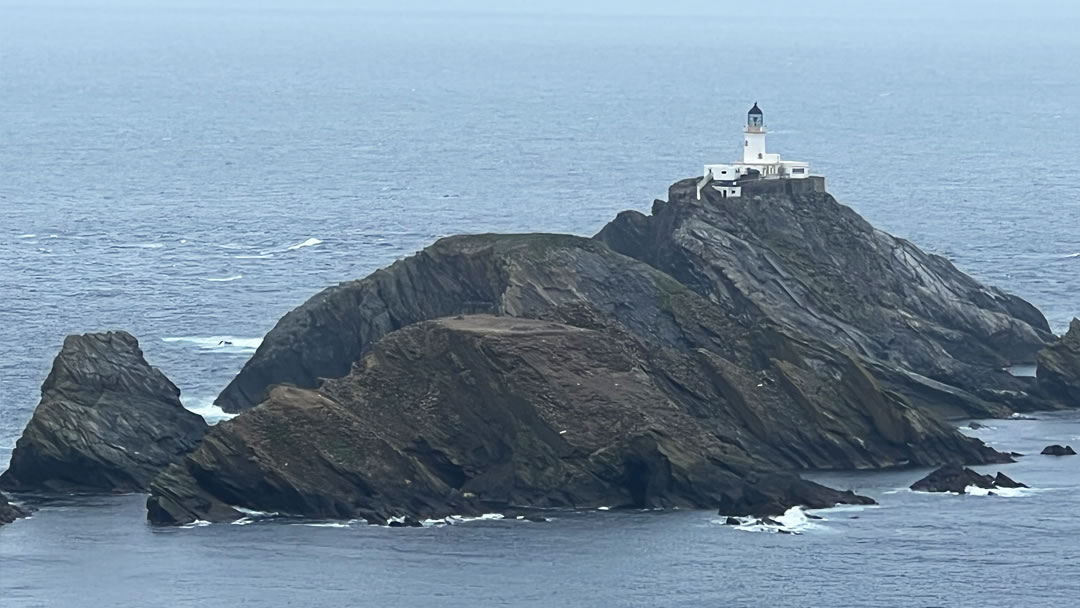
Muckle Flugga is said to have been inspired Robert Louis Stevenson’s Treasure Island, according to more than one proud islander I met. We know Stevenson visited the lighthouse in 1869 as he signed the visitor book. Then Stevenson eschewed the family lighthouse building dynasty and left Scotland for self-imposed exile in the South Seas.
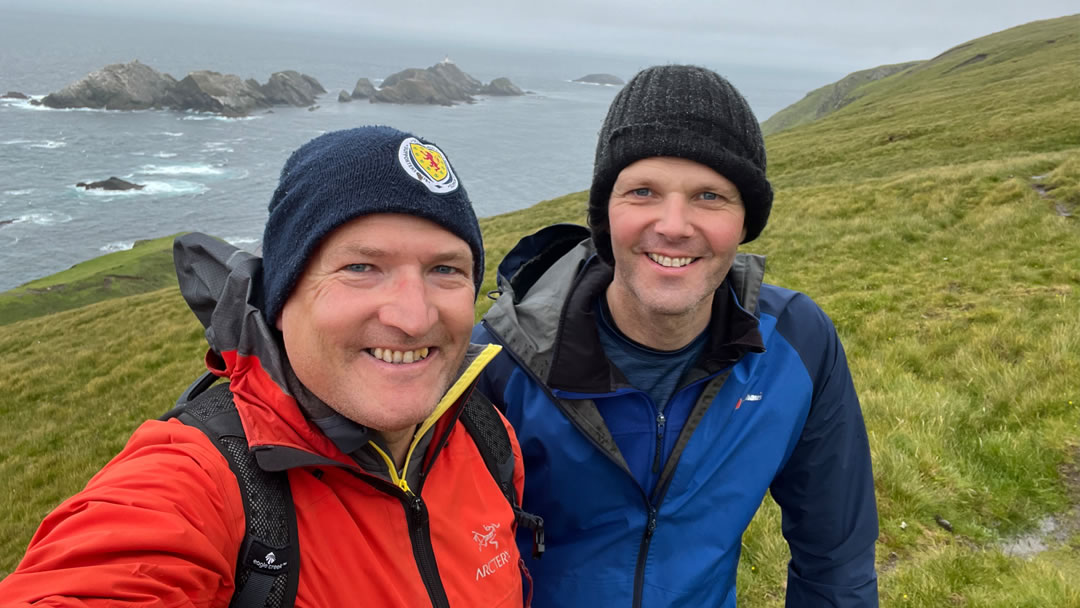
There really is no bad time to visit Hermaness. Spring is ideal as most of the seabirds arrive towards the end of April and spring squill blankets the grassland with a blue sheen in May. In summer those bonxies add spice to hikes during their nesting season and you’ll find cute puffins waddling right by the cliff edges. By autumn the seabirds are largely gone, but the solan geese (the local name for gannets) brazen it out as the grey seals breed and the moorland explodes in a burning blanket of autumnal colour. Winter walks bring out Shetland at its wild, savage best as the Atlantic often batters the cliffs with huge waves.
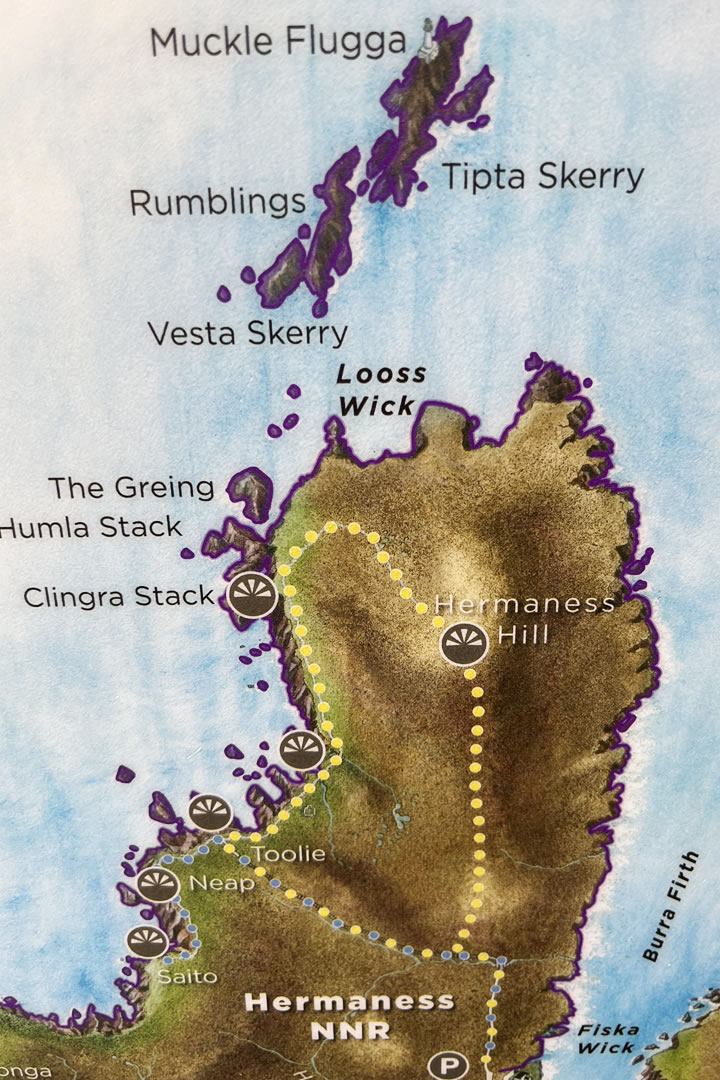
There are two main trails to explore. The Saito Trail is a there and back linear option that ventures out to the epic western cliffs. It works well if your sole focus are the seabirds. I much prefer the slightly longer Muckle Flugga loop, which lets you yomp north along the cliffs and then you are also rewarded with vistas across to Muckle Flugga, with a return exploring the hinterland as you come over Hermaness Hill.
Whichever option you choose you are guaranteed a world-class walk and divine wildlife experience. This is Hermaness after all and there are just not many nature reserves in the world as dramatic and as alive with wildlife.
*As with all hikes in Scotland make sure you check the weather before setting out, have the proper clothing and supplies, take a map with you and compass, and let someone know where you are going and when you expect to be back.
 By Robin McKelvie
By Robin McKelvieRobin McKelvie is an award-winning travel writer and broadcaster who has been published in over 200 magazines and newspapers worldwide.
Pin it!